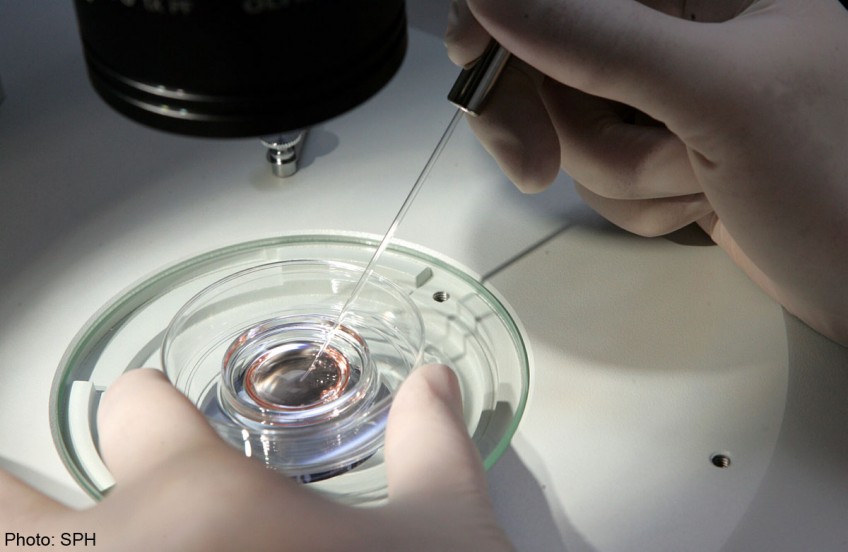Stem cells from one drop of blood

SINGAPORE - Scientists in Singapore say they have found a way to create human stem cells from a drop of blood pricked from a finger.
Stem cells are cells which can develop into any specialised tissue, for example, bone or kidney cells, so they hold the promise of being grown into new organs in laboratories to replace diseased parts.
Previously, methods for generating these cells - called human-induced pluripotent stem cells - involved collecting adult cells from bone marrow, skin or large quantities of blood. These were then genetically coaxed into reverting into stem cells.
However, such invasive collection methods have deterred some potential donors.
Researchers from the Agency for Science, Technology and Research (A*Star) revealed their new technique yesterday.
The team, from A*Star's Institute of Molecular and Cell Biology, had tried to find a way of reducing the amount of blood needed to generate the stem cells, and created a me-thod requiring just a single finger prick.
It could encourage a wider range of people to donate stem cells and collect their own blood samples, the scientists said.
It could also lead to the establishment of comprehensive "biobanks" from people with a broad range of ethnic backgrounds, genetics and disease risks.
"It all began when we wondered if we could reduce the volume of blood used for reprogramming," said Dr Jona-than Loh, who led the research. "We then tested if donors could collect their own blood sample in a normal room environment and store it.
"Our finger-prick technique, in fact, utilised less than a drop of finger-pricked blood. The remaining blood could even be used for DNA sequencing and other blood tests."
The cells collected from the finger pricks were reprogrammed into stem cells which were then turned into heart cells.
Stem cells can be used for basic research, to test new drugs, and for cell therapy.
There have been ethical objections to using their traditional source - human embryos - so such induced pluripotent stem cells have often been used as an alternative.
The team's work was published in the journal Stem Cell Translational Medicine yesterday. The researchers have filed a patent for the method.

Get a copy of The Straits Times or go to straitstimes.com for more stories.